Honest beer at Battle Street Brewery
by D.E. Bentley –
Train station restoration expands Livingston “Libation Loop”
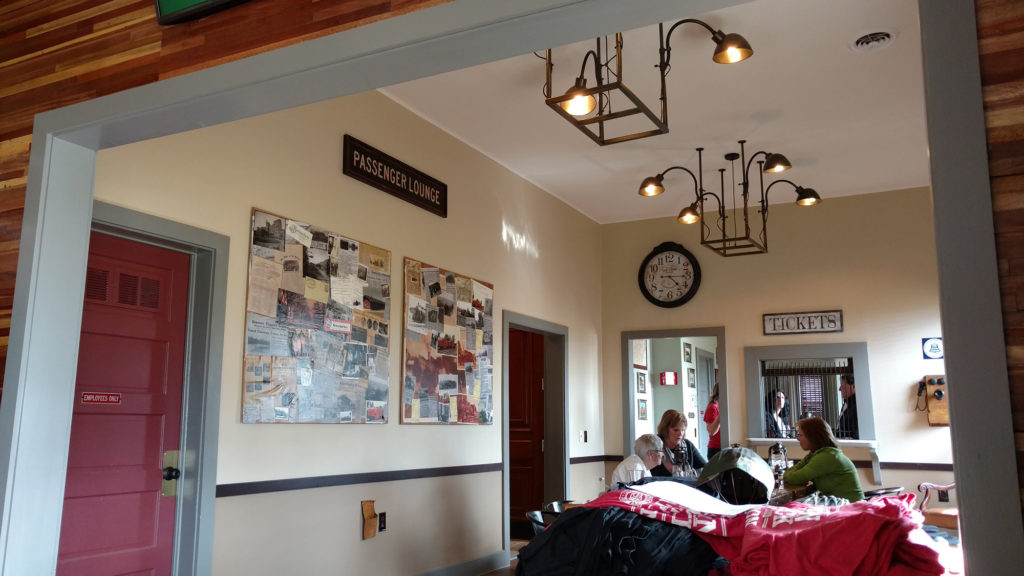 Rail transportation has always fascinated me. I grew up riding horses and mini bikes along abandoned railroad tracks built in the mid-1850s by the Cayuga and Susquehanna Railroad Companies. The rail station that once served that rail was called “Pugsley’s Station,” little more than a wooden shack in Brookton (Now called Brooktondale) offering telegraph service and shipments out along the Lehigh Valley line until 1935. Like the trains that once traveled that line, the station and the tracks are gone, consumed by encroaching vegetation – little remains to remind us of what came before. Thankfully, many stations across the state are now being refurbished and repurposed as awareness grows regarding the importance of preserving NYS rail history.
Rail transportation has always fascinated me. I grew up riding horses and mini bikes along abandoned railroad tracks built in the mid-1850s by the Cayuga and Susquehanna Railroad Companies. The rail station that once served that rail was called “Pugsley’s Station,” little more than a wooden shack in Brookton (Now called Brooktondale) offering telegraph service and shipments out along the Lehigh Valley line until 1935. Like the trains that once traveled that line, the station and the tracks are gone, consumed by encroaching vegetation – little remains to remind us of what came before. Thankfully, many stations across the state are now being refurbished and repurposed as awareness grows regarding the importance of preserving NYS rail history.
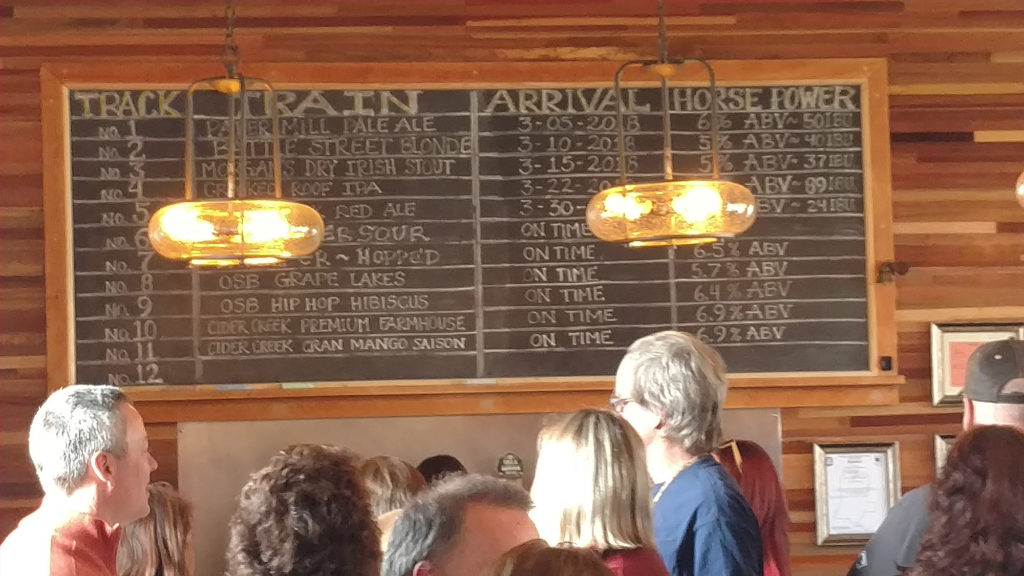
In Dansville, NY there is a grand old station that has gotten some recent attention after being lovingly restored.
Now a stopover of a different sort – Battle Street Brewery – the former Dansville and Mount Morris Station nonetheless retains remnants of its historic past. One exciting aspect to this train station restoration (in addition to seeing another piece of our rich historic past preserved and valued) is its link to another rapidly reemerging part of our past – our agricultural dominance in hops and other crops for the manufacturing of beer and related drinks of imbibement. The Farm Brewing Law that went into effect in New York State in 2013 has stimulated this resurgence in beer making, as the New York Farm Winery Act did for wine. * The law has simultaneously reignited an agricultural industry that was a rich and enduring part of our region’s past. As of January 2018, breweries must source 60% of their beer making crops from farms within New York State – by 2024, that figure rises to 90%.
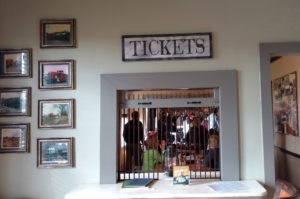
A decade ago, almost all hops production was in the Pacific Northwest. For all but the old timers, hops was not a familiar local crop. Yet, in the mid 1800s, when the railtransportation industry was active in central New York, this region was number one for hops. Like the train stations that were found in many towns, fields of barley and poles of fragrant hops were once an integral part of our rural landscape. Prohibition and a fungus that devastated the region’s crops ended this vibrant early farm to table beverage industry.
Fast forward to today, when hop bines again dot the hills, barley is being malted locally and an abundance of locally made craft beers are turning even non-beer drinkers – like me – into true believers. Anyone who has taken a recent drive and looked out across the rolling lands of the Finger Lakes can’t miss the unmistakable presence of hops bineries, along with the increase of breweries and eateries offering an array of locally brewed and distilled beverages. When I heard about Battle Street Brewery – which, along with other regional breweries and distilleries in Livingston County and around New York State is helping to reestablish our prominence as a beer-producing region while also helping to preserve an awesome piece of rail history – I just had to check it out.

So, it’s the little things that often make a difference in how welcoming and warm a place feels. In the case of Battle Street, I wanted to feel some of that early train station elegance and the hustle and bustle that one might associate with a busy rail station. In that respect I was not disappointed (the place was – pardon the pun – hopping), but there was so much more. Walking up from the outside, it was evident that every attempt was made to retain the historical character of the station – including an extensive deck area reminiscent of a train platform. The day was sunny, making it easy to envision tables full of Brewery guests. Stepping inside, many original features have been preserved such as the ticket booth and a large wall mount station clock. There was old luggage tucked into the architecture overhead and built into the front of the black walnut bar. Images of the station’s history are everywhere. The former office of Bob Hart (1924-2012), President of the Dansville & Mount Morris Railroad and a North Dansville Town Supervisor for 43 years, has been reworked into a friendly game room and an area for private seating. In the current employees’ office adjacent to the game room, there is a small hidden storage space – just for the workers’ after-hours fun (ssshhh). A desk drawer – in an awesome desk used by General Manager Marissa Siciliano now – has carved signatures from past users. History is everywhere. There are also added features – like the awesome beer list laid out like a train schedule (how cool is that!), coat hooks made from rail spikes and a small screen in the attic door that runs period film clips – integrated seamlessly into the comfortable and comforting historic decor.
Like the NYS plan for locally sourced beer, in taking the old station from down and out to dynamite, most of the related work was done with locally sourced labor using locally sourced materials, including refurbished materials from the station’s exterior. Crafts people, working in many cases in ways similar to one hundred years ago, included woodworker Matt Williams – who crafted the black walnut bar (complete with under bar luggage), Pat Van Durme – who crafted the tables from old barn doors, Kyle Tracy – who did the metal work, Skip Wolfe, Shay Construction, Scott Tracy and many others who contributed their time and expertise to create a contemporary brewery that retains the character of days of old.
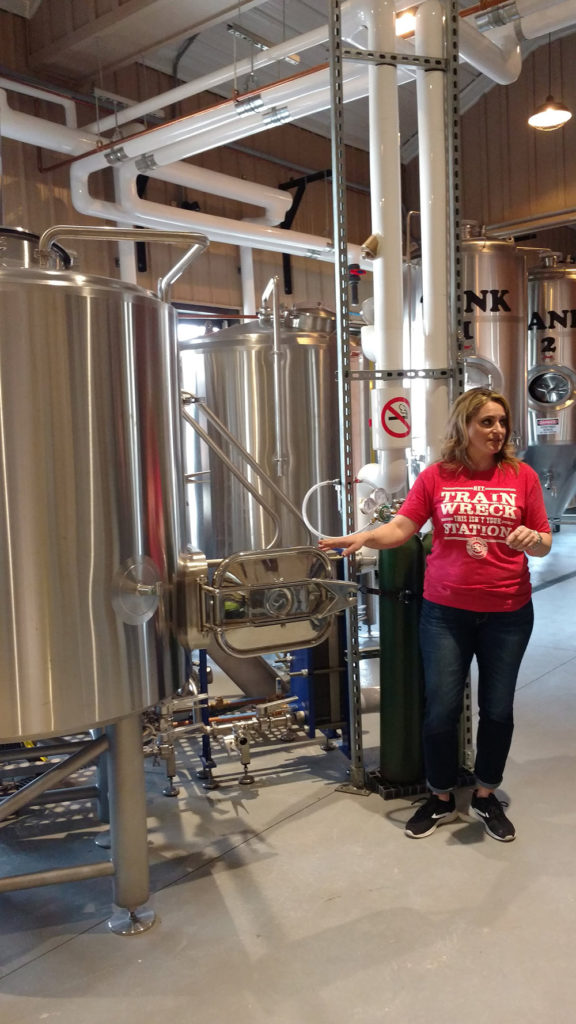
Speaking of Crafts, perhaps it is time to move onto the brew portion of our recent Battle Street Brewery visit at the former D&MM Station. The new brewery’s brew master is Denny Boor, a childhood friend of Battle Street’s owners Doug and Tom Acomb and their brother, Dave – also very involved in the brewery. We made our debut visit to Battle Street on April 7, 2018 to sample some of their new brew and to get a tour from Marissa Siciliano. We started by purchasing a flight and settling into a casual soft chair seating area. My beer-tasting accomplice took the lead here – as he is more of a craft beer enthusiast than I am. With his astute guidance, I have started to truly enjoy some NYS beers and have developed an ability to go beyond thumbs up (or thumbs down) to an ability to describe beers and develop preferences. We sampled four of their signature beers and found all to be thumbs up. No fancy flavors designed to wow, just great tasting, honest beers. The Paper Mill Pale Ale (6% ABV) was straightforward, traditional light pale ale, with strong bittering hops. The Crooked Roof IPA (7.4% ABV) was a bit sweeter. We also tried their Castle Brick Red Ale (7.4% ABV) – a dry, Irish style ale – and a nice dry, slightly hoppy, Morgan’s Dry Irish Stout (5% ABV). Often we like some beers at a particular brewery, but here we liked them all. Not usually a fan of pale ales – which my brewery partner adores, I liked both of these, especially Paper Mill.
Marissa Siciliano’s tour came after the beer and allowed us a behind the scenes look
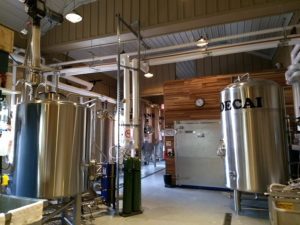
at the beer making operation: From Malt grinding and separating; to wort tanks; from wort tanks to boil kettle where hops are added at different stages depending on the type of beer (the spent grain is used by a local farm for hog slop); then onto the fermentation tanks – where the yeast is added. After fermentation, the beer is transferred to a bright tank — dish-bottomed, pressure-rated temperature-controlled tank used to hold beer in preparation for packaging. A “bright beer” is a beer that has been rendered bright (clear) by filtration, centrifugation, fining, and/or maturation. After that the beer is transferred to what Siciliano said was “everyone’s favorite room,” the cooler. It is here that the beer is stored, in kegs, before being tapped.
And we all know what that means.
There is only one regret, that I can’t hop a train to share in some good company and NYS brewed hops and malted barley. No matter: Walk, bicycle or drive (responsibly) to (and from) Battle Street Brewing and check out this great piece of history in the making.
* A new Farm Meadery License in FY 2019 will do a similar thing for mead.